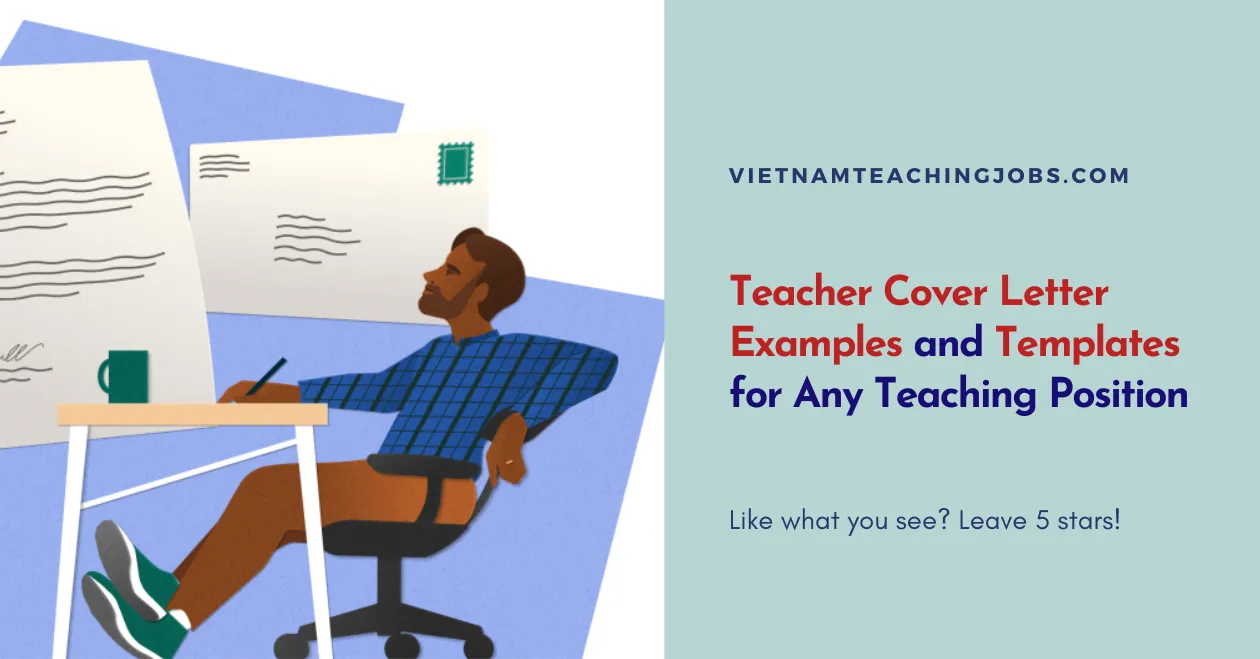Crafting a compelling teaching cover letter is a crucial step in landing your dream job in education. A well-written cover letter serves as your introduction, giving you the opportunity to showcase your skills, experience, and passion for teaching. With the right approach, you can capture the attention of hiring managers and increase your chances of securing an interview. This guide provides five proven tips to help you create a standout teaching cover letter that highlights your qualifications and sets you apart from other applicants. Follow these tips to make a strong impression and move closer to your teaching goals.
Highlighting Your Teaching Philosophy
Your teaching philosophy is the core of your approach to education. It reflects your beliefs about how students learn, what you aim to achieve in the classroom, and how you create a positive learning environment. A clear, concise teaching philosophy demonstrates your understanding of education and your commitment to student success. By including this section, you give hiring managers insight into how you approach teaching, what inspires you, and how you intend to influence your students, setting the foundation for your application and career.
Define Your Teaching Philosophy
Start by defining your teaching philosophy. This involves articulating your beliefs about the role of a teacher, the process of learning, and the ideal classroom environment. Consider what you value most in education: is it fostering critical thinking, promoting creativity, or building a supportive community? Reflect on your past experiences and how they have shaped your views on teaching. When crafting your philosophy, use clear, concise language that is easy to understand. Ensure that it is authentic and reflects your true values. This section is your chance to show that you know what you are doing.
Example of Teaching Philosophy
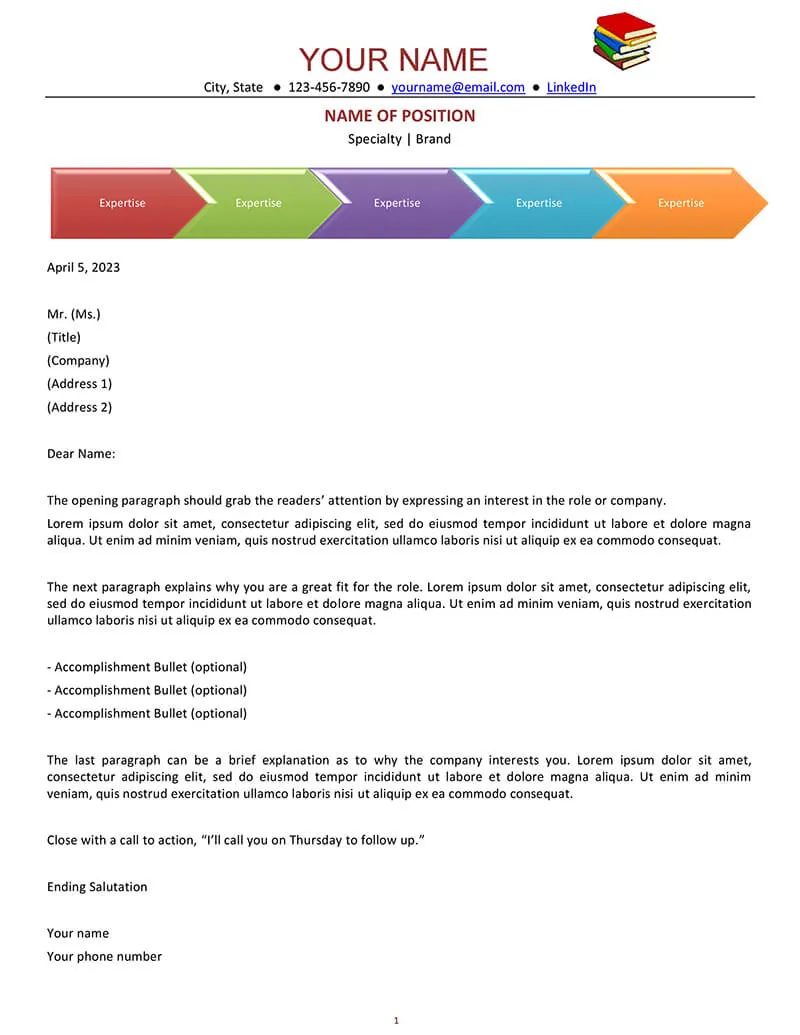
Here is a sample example of how to express your teaching philosophy; “I believe in creating a student-centered classroom where every student feels valued and empowered. My goal is to foster critical thinking skills, encourage collaboration, and inspire a lifelong love of learning. I strive to create a supportive, inclusive environment where all students feel safe to explore their potential. The classroom must be a place of discovery and growth, where curiosity is encouraged, and mistakes are viewed as opportunities for learning. My teaching approach emphasizes differentiated instruction and assessment, providing a personalized learning experience. The focus is on promoting each child’s growth while preparing them for future success.”
Showcasing Relevant Skills and Experience
Your cover letter is the perfect place to highlight the specific skills and experiences that make you a strong candidate. Tailor your letter to the specific requirements of the job description, emphasizing the skills and experiences that align with the school’s needs. This demonstrates that you have the abilities and background necessary to succeed in the role. By focusing on these elements, you can effectively convince the hiring manager that you are the best candidate for the teaching position. When it comes to teaching, some key components should be shared, such as your academic background and classroom management.
Detailing Your Academic Background and Qualifications
Provide a concise overview of your academic qualifications, including your degrees, certifications, and any specialized training relevant to the position. Specify the name of the institutions you attended, the dates of your graduation, and your major. If you have relevant certifications, such as a teaching license or specific endorsements, be sure to mention them. This helps demonstrate that you possess the necessary knowledge and credentials. Make sure the academic information is accurate and easy to understand. Include any honors, awards, or academic achievements that can set you apart from other applicants.
Demonstrating Classroom Management Abilities
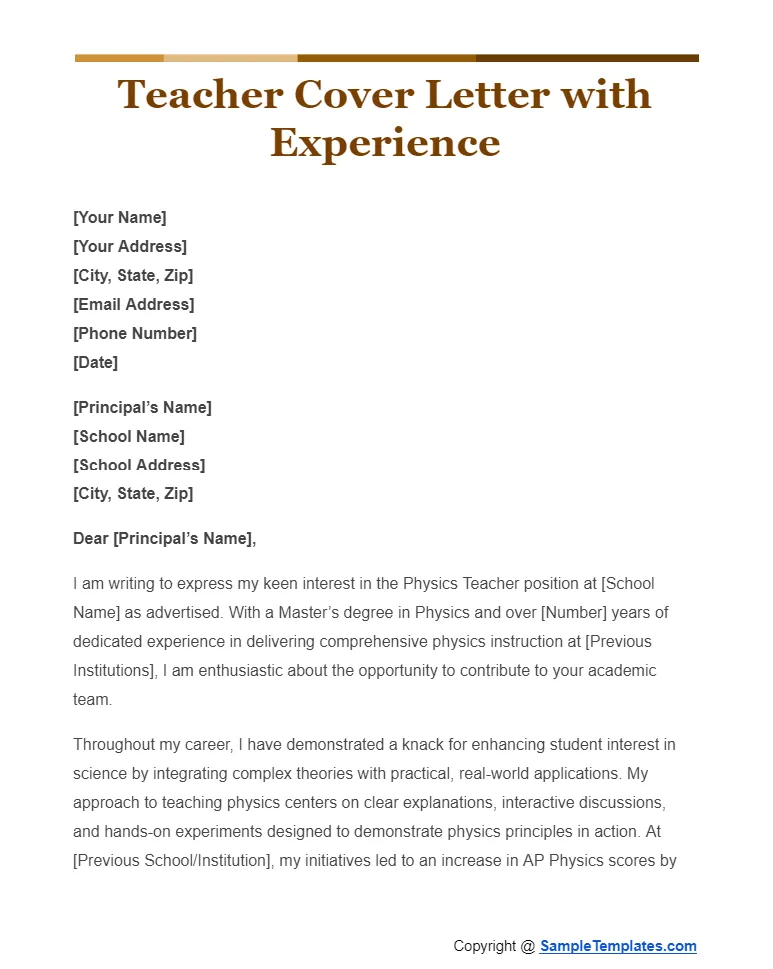
Classroom management is a vital aspect of successful teaching. Describe your approach to managing student behavior, creating a positive learning environment, and establishing clear expectations. Provide examples of strategies you have used to handle disruptions, encourage participation, and build rapport with students. Highlight your ability to create a structured and supportive classroom where students feel safe and motivated to learn. This shows that you understand what it takes to keep the focus on student learning. Always keep in mind that this is an important piece to the puzzle when seeking a teaching position.
Emphasizing Relevant Experience
Describe your teaching experience, including the grade levels and subjects you have taught. Provide specific examples of successful lessons, projects, and student outcomes. If you have experience working with diverse student populations, special needs students, or implementing innovative teaching methods, be sure to mention it. Also, highlight any leadership roles you have held, such as mentoring new teachers or leading curriculum development initiatives. Quantify your achievements whenever possible, using metrics like student test scores, project completion rates, or student engagement. The more detail you provide, the better the impression you make.
Customizing Your Cover Letter
A generic cover letter is unlikely to capture the attention of a hiring manager. Customizing your cover letter for each job application is essential. This demonstrates that you are genuinely interested in the specific position and have taken the time to understand the school’s needs and values. Customization shows you care and provides the hiring manager with confidence that you are ready to contribute to their learning environment. This is not a one-size-fits-all process and you must remember to personalize it with each teaching opportunity.
Tailoring to the Specific Job and School
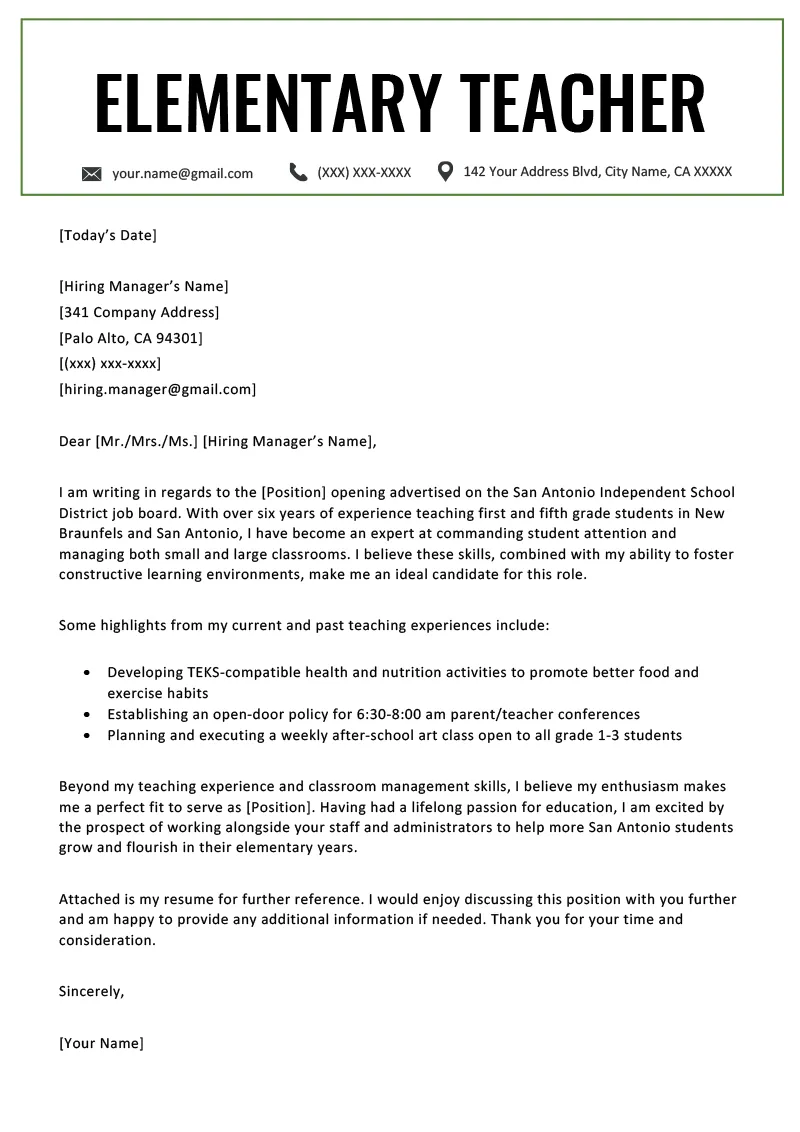
Carefully review the job description and identify the key skills, qualifications, and experiences that the school is seeking. Customize your cover letter to address these requirements directly. Highlight the skills and experiences that match the job description, providing specific examples. If the job description mentions a need for experience with a particular curriculum or technology, make sure to address that in your letter. Be sure to modify the details about the school, and the role, when sending it out. A tailor-made cover letter sets the tone for your capabilities.
Researching the School’s Mission and Values
Research the school’s mission, values, and programs. Visit the school’s website, read their mission statement, and learn about their educational philosophy. Identify the school’s priorities and how your skills and experience align with them. In your cover letter, demonstrate your understanding of the school’s values and explain how you can contribute to their mission. This shows your sincere interest in the position. Aligning your cover letter to a school’s philosophy will create an impression of commitment.
Expressing Enthusiasm and Passion
Your cover letter is an opportunity to convey your passion for teaching. Enthusiasm is contagious, so let your excitement for the profession shine through. Use strong, positive language to describe your love for teaching, your commitment to student success, and your desire to make a difference. This will make you more memorable. Enthusiasm should be coupled with a positive attitude and a sincere desire to help students. Be genuine and sincere. Do not be afraid to show your personality. Make sure that your passion for teaching is unmistakable.
Closing with a Strong Call to Action
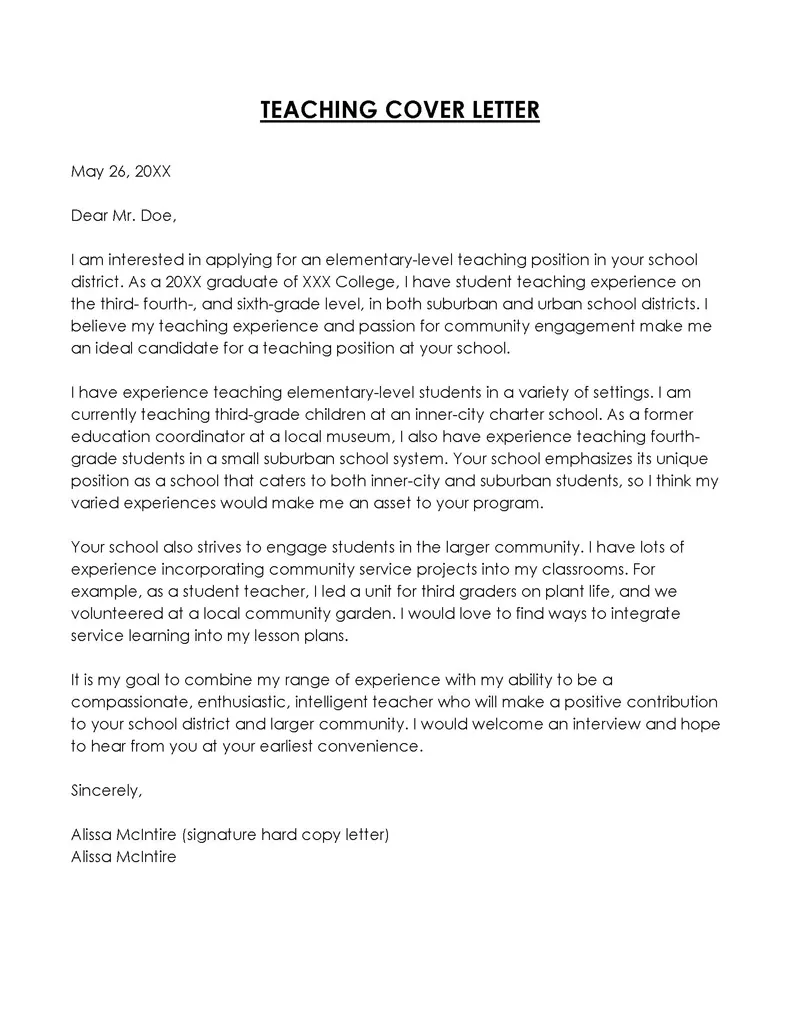
Concluding your cover letter with a strong call to action is important. You need to make it clear what you want the hiring manager to do next. This shows that you are proactive and interested in taking the next step in the hiring process. This is your closing, and it needs to be as impactful as your opening. Be sure to keep the following in mind when crafting your call to action.
Requesting an Interview
Clearly state your desire for an interview. Express your interest in discussing your qualifications further and explain how you can contribute to the school. Make it easy for the hiring manager to contact you by including your phone number and email address. Reiterate your availability and willingness to meet at their convenience. Be confident in your ability to deliver as you close out your cover letter. An interview will be your chance to solidify your case for the position.
Thanking the Hiring Committee
Express your gratitude for the hiring committee’s time and consideration. Show appreciation for the opportunity to apply and express your enthusiasm for the possibility of joining their team. Thanking the hiring committee is a professional and polite way to end your letter. A simple thank you can leave a positive impression. A thoughtful closing shows you appreciate the effort they put in. A great closing is an essential component of a successful cover letter.
By following these five proven tips, you can create a compelling teaching cover letter that highlights your qualifications, expresses your passion, and increases your chances of landing a teaching job. Remember to tailor your letter to each specific job, showcase your skills and experience, and express your enthusiasm for the profession. With a well-crafted cover letter, you will be one step closer to achieving your teaching goals. Good luck with your job search!
